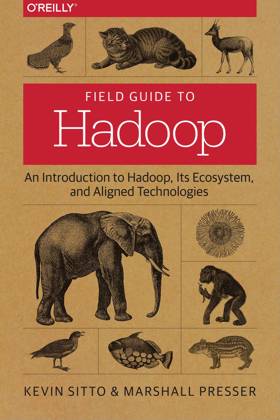| Field Guide to Hadoop |
Page 2 of 2
Authors: Kevin Sitto & Marshall Presser
Chapter 6 Data Transfer Typically, data arrives in Hadoop from other systems. These include relational databases and various flat file sources. This chapter outlines some of the major tools that move data in and out of Hadoop, and between Hadoop clusters. Tools discussed include:
Many big data projects will require data from external sources, so the popular tools discussed in this chapter should prove very helpful.
Chapter 7 Security, Access Control, and Auditing This chapter opens with a bit of history. The initial approach to security was just to ring fence Hadoop with a firewall, once inside you could do much as you pleased. Things are now changing, with more granular security. Tools examined include:
Security is increasingly important, perhaps more so with the increasing amount of data stored in big data systems, the tools in this chapter should help secure your data.
Chapter 8 Cloud Computing and Virtualization Most Hadoop systems run on physical systems, however there are advantages in using cloud and virtual systems, chief among them is the ease of creating a system, on-demand scalability, and less up-front costs. Tools examined include:
This chapter looks at some of the cloud and virtualization tools available for Hadoop. Although there are some disadvantages (often slower performance, YARN/MapReduce do not have complete control of the box), they need to be weighed against the advantages (quick to create, on-demand scalability, low up-front cost).
Conclusion This book is very broad in scope, and by necessity (since it’s a field guide), shallow in depth. It provides up-to-date but limited detail on the major components of the Hadoop big data system. Helpful links are provided for further information. The book is mostly easy to read, with a consistent layout of content (i.e. License, Activity, Purpose, Official Page, Hadoop Integration, description, tutorial link, and simple example code). Useful comparisons between tools are occasionally provided. This book should prove helpful to managers, developers, and architects, which are new to big data and want a quick overview of the major components of Hadoop. Most Hadoop books discuss some of the components listed here, but this book contains a much wider range of components than other books. That said, there are omissions, including:
The authors intend to update this book regularly (every year or two), which is ideal if you want to know about the current popular components, and especially good if you have access to safari online (but bad if you need to keep buying the updated book). Where should you go next after reading this book? I would suggest gaining some detail by reading Big Data Made Easy, which I recently reviewed. If you’re new to big data and Hadoop, and you want to quickly review what it is, and the current state of its major components, I highly recommend this small book.
|
||||||
| Last Updated ( Wednesday, 22 April 2015 ) |

